Um er-Rasas, Jordan
Isolated from everyone else and without the distractions of daily life, a man is lost in prayer.
He is not comfortable, though. Exposed to the elements and with minimal food, he endures these conditions for days, weeks, months… maybe even years.
But it’s this suffering that brings him closer to God.
He is closer to God spiritually, of course. But physically too. For this man has chosen to sit alone at the top of a tall tower, trapped with no way to get back down.
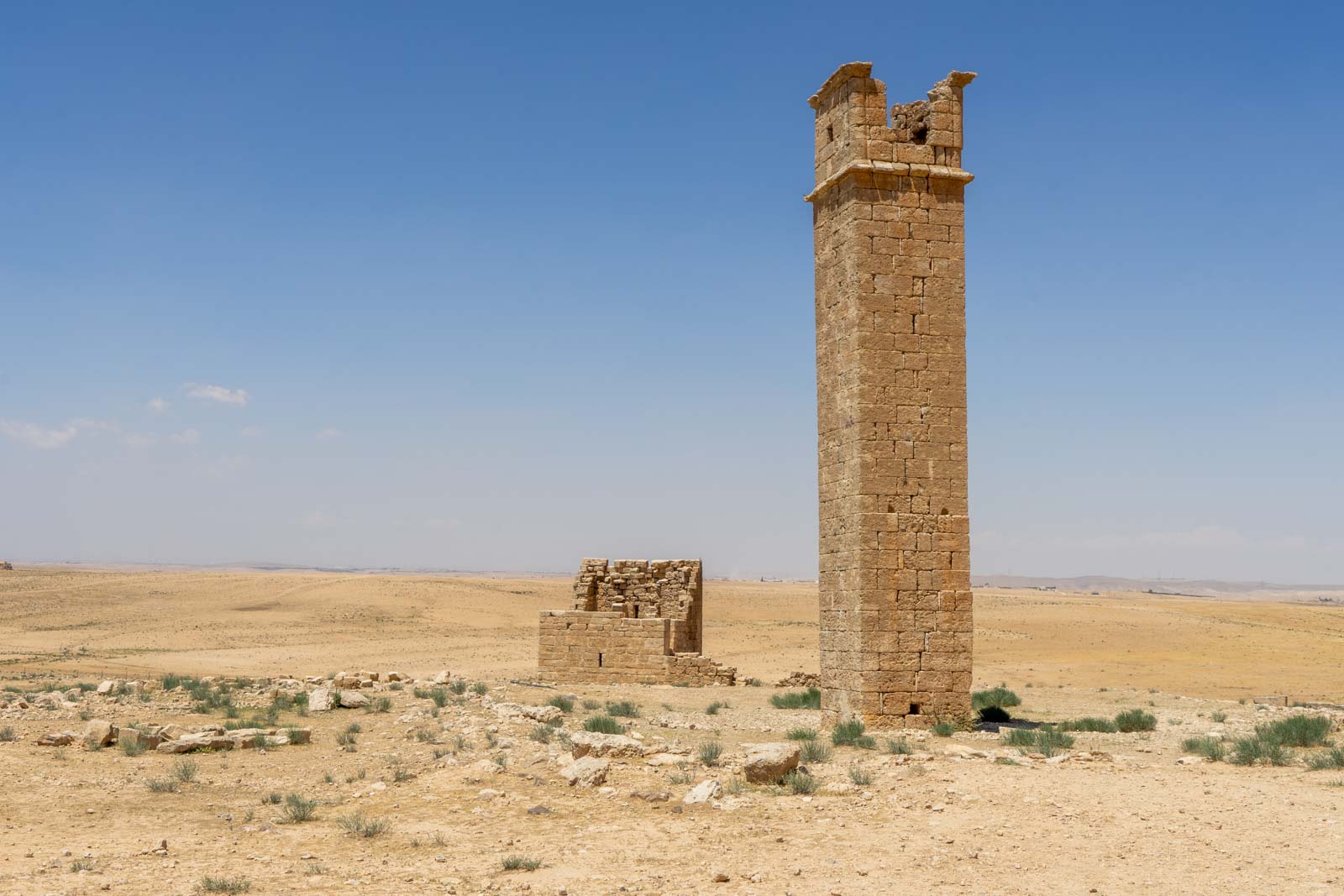
The Stylite Tower at Um er-Rasas
The man is a Stylite, also known as a ‘pillar saint’, part of a religious movement that took place about 1500 years ago in the Middle East.
These Christian ascetics lived on the top of towers and practiced mortification of their bodies, believing it would help the salvation of their souls. They would isolate themselves, starve themselves, face harsh weather conditions, and pray.
While there is much written evidence about the Stylites, there is little that is left physically these days. But one of the only Stylite Towers that remains in the world is in Jordan, at a site called Um er-Rasas.
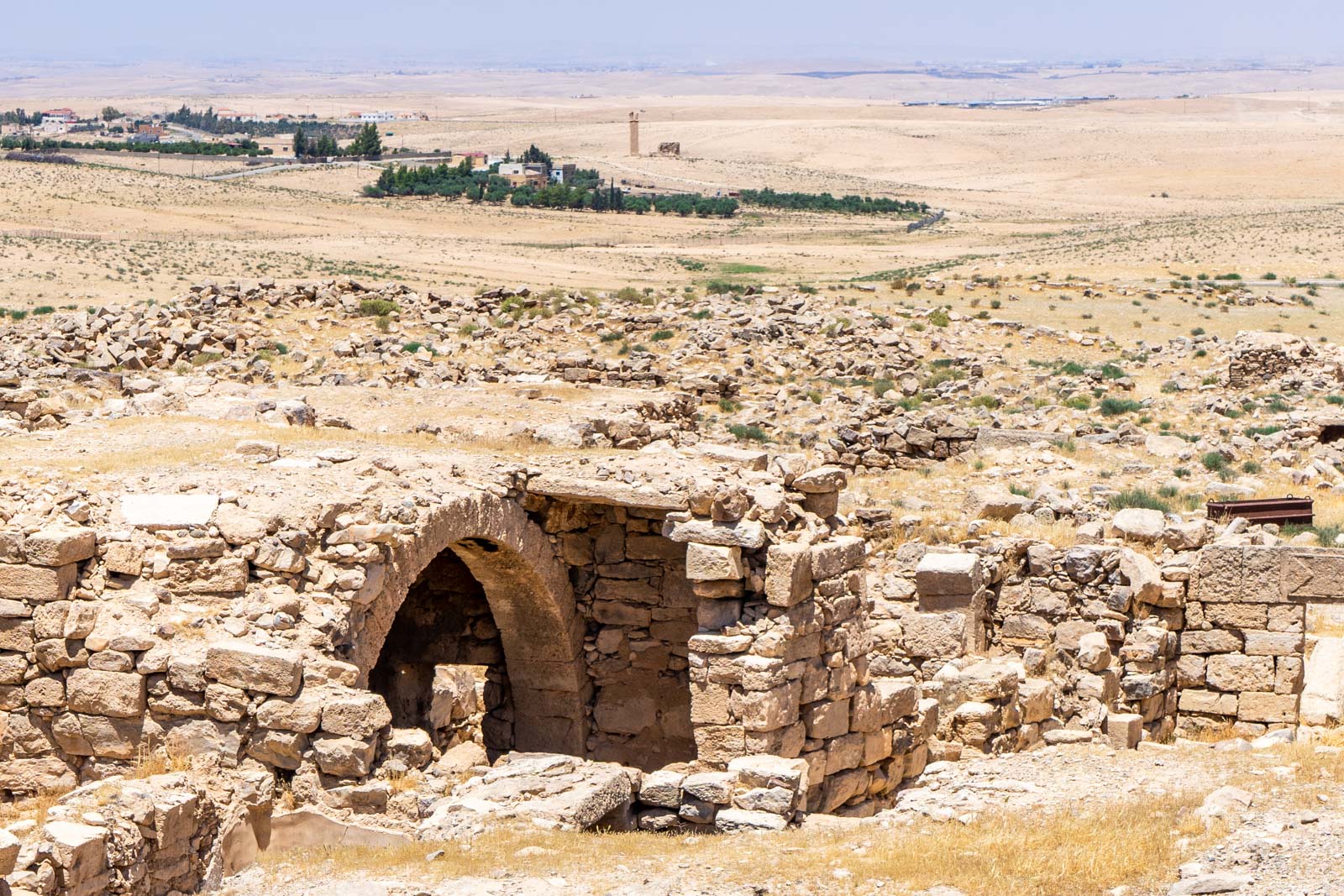
Standing beneath it, I tilt my head up towards the top, trying to get a sense of its height. The tower is about 14 metres tall, which is certainly quite tall. But it seems even higher when I start to imagine the scene I would be witnessing if I was standing here in the 5th or 6th century.
There would be a man standing or sitting at the top, possibly enclosed within a small room or exposed to the elements. Beneath him would be just the solid and slim tower for support.
There would have been no stairs to walk up or down, no where else for him to go.
Probably he would have got to the top with some kind of ladder that he would also be able to use to leave at the end. But until that time, he would just use a basket on a rope to get enough minimal supplies to stay alive.
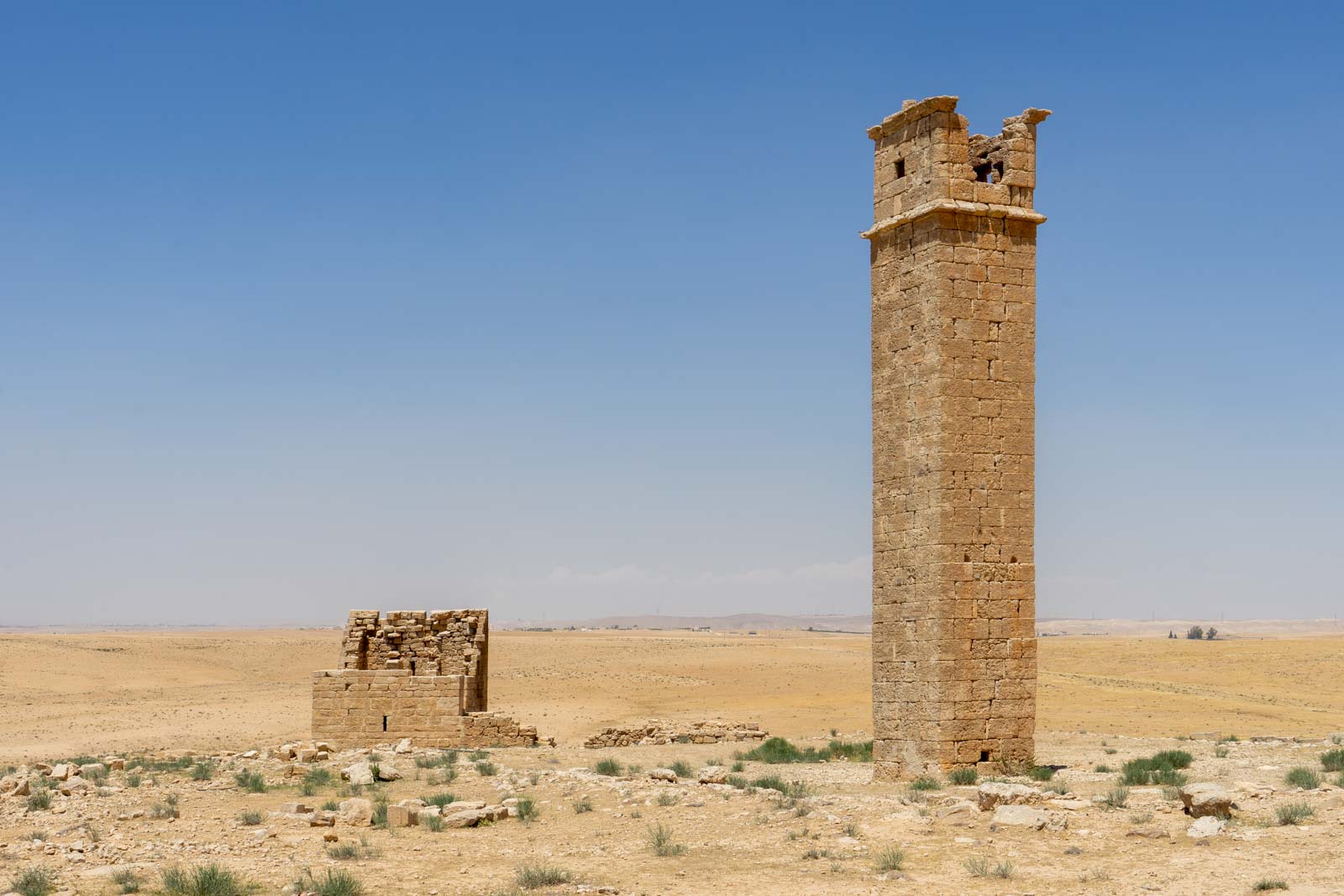
It’s an incredible sight to see it today and to imagine all of this. This period of religious history was full of drama but this would have been one of the most dramatic things an individual could do in the name of his god.
The fact that it is possible the only one that still remains in the world – well, that just makes it even more special.
A brief history of Um er-Rasas
As it turns out, the whole site here at Um er-Rasas in Jordan is rather special. It’s not one of the most famous spots in the country for tourists but, as one of Jordan’s five World Heritage Sites, it is incredible significant.
One of the reasons that Um er-Rasas is a World Heritage Site is because of the Stylite Tower and what it represents of that period in history. But there were a lot of other consequential things going on here at the time.
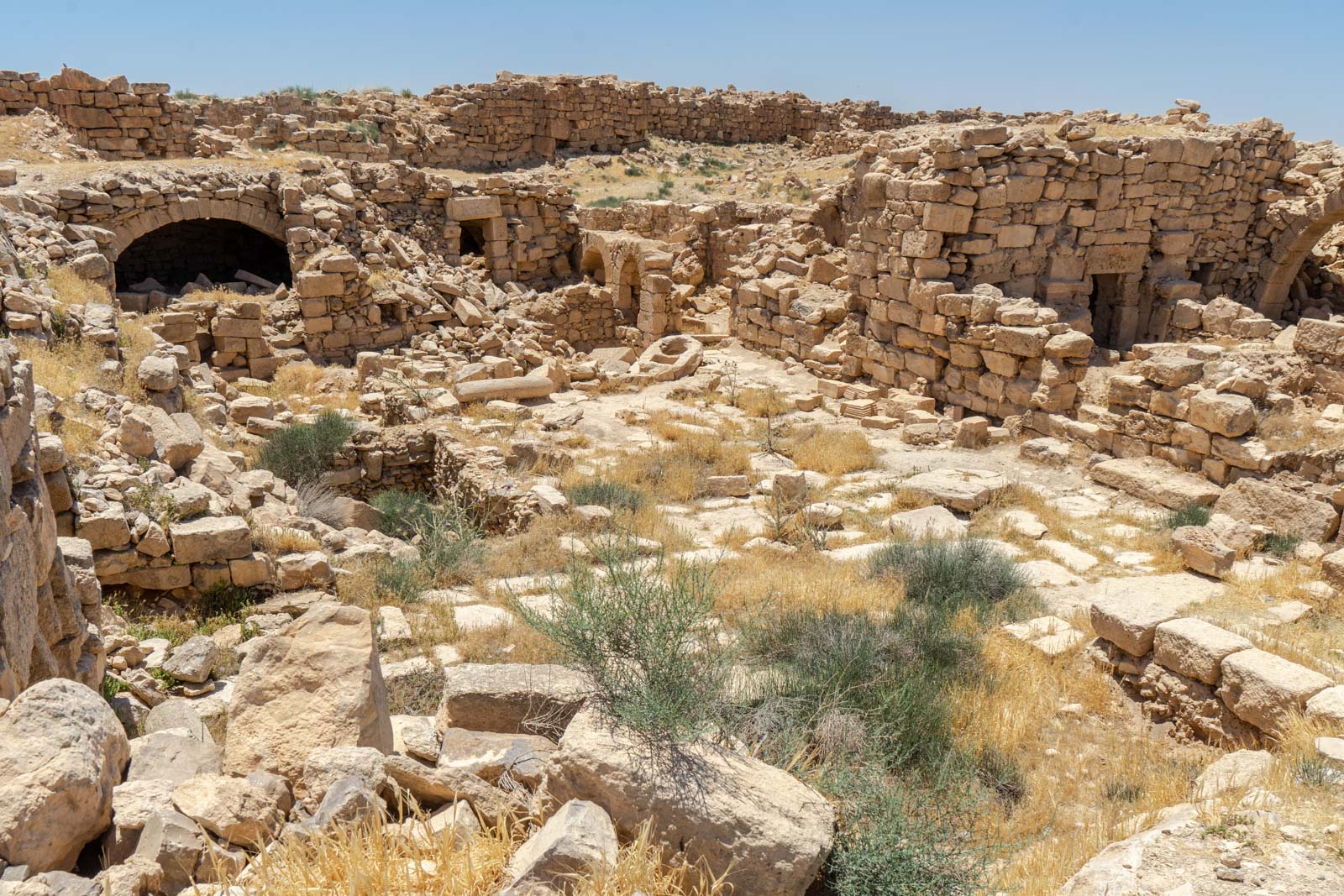
Um er-Rasas began as a Roman military fortress but its significance only really began during the early part of the Byzantine period around the 4th century.
Christian pilgrimage had become a popular tradition and people from around the region were coming to visit the sites that were said to be at the centre of stories in The Bible. Many of them were in Palestine and the area surrounding it.
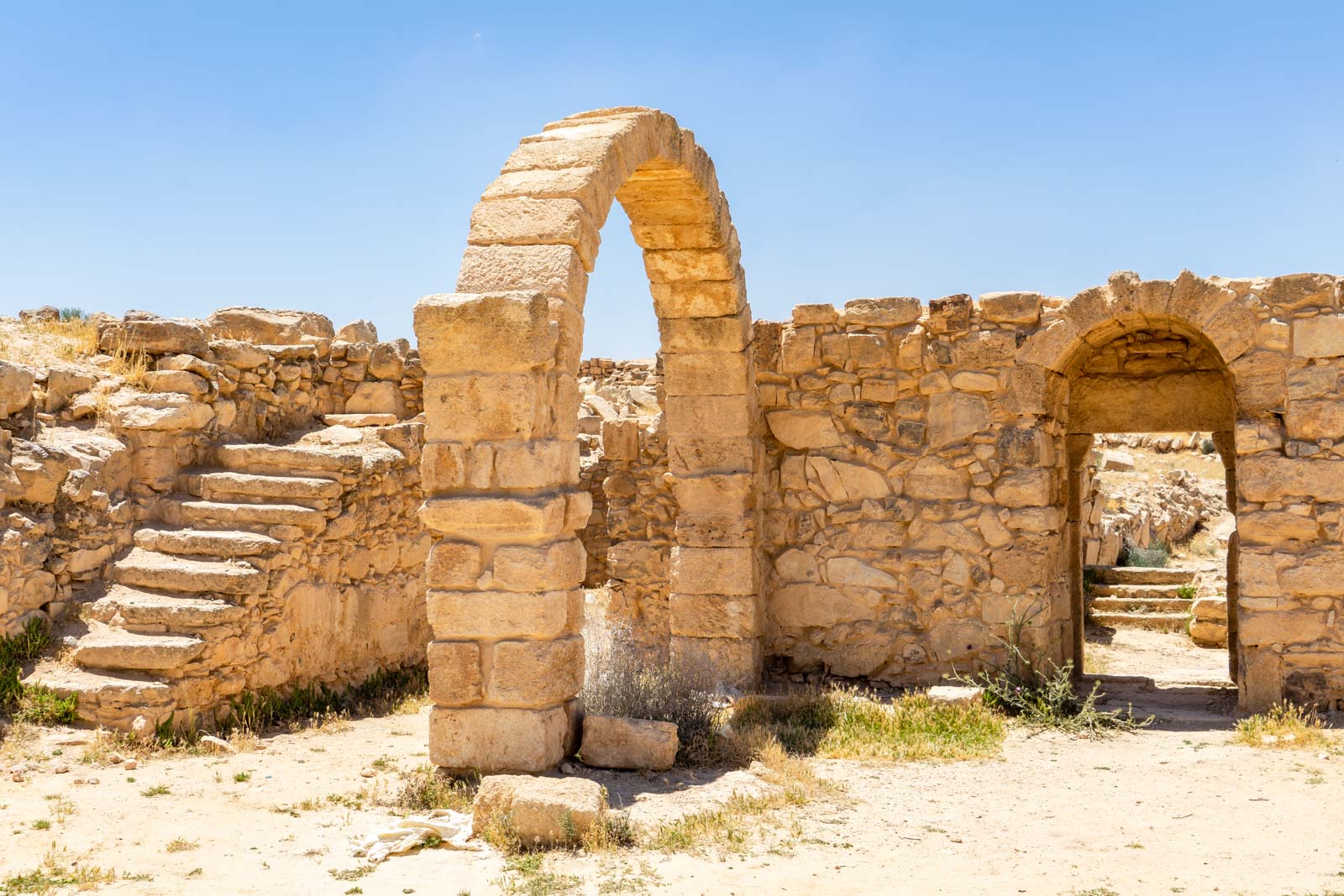
Um er-Rasas evolved into a religious centre for these pilgrims. It was a place for them to rest and meet other travellers. But it was also a place to worship and to learn. (It’s presumably why some Stylites chose to build a tower here.)
You can tell just how large and important Um er-Rasas became by what you’ll find here today. There are the ruins of at least 16 churches – plus the infrastructure to support thousands of residents.
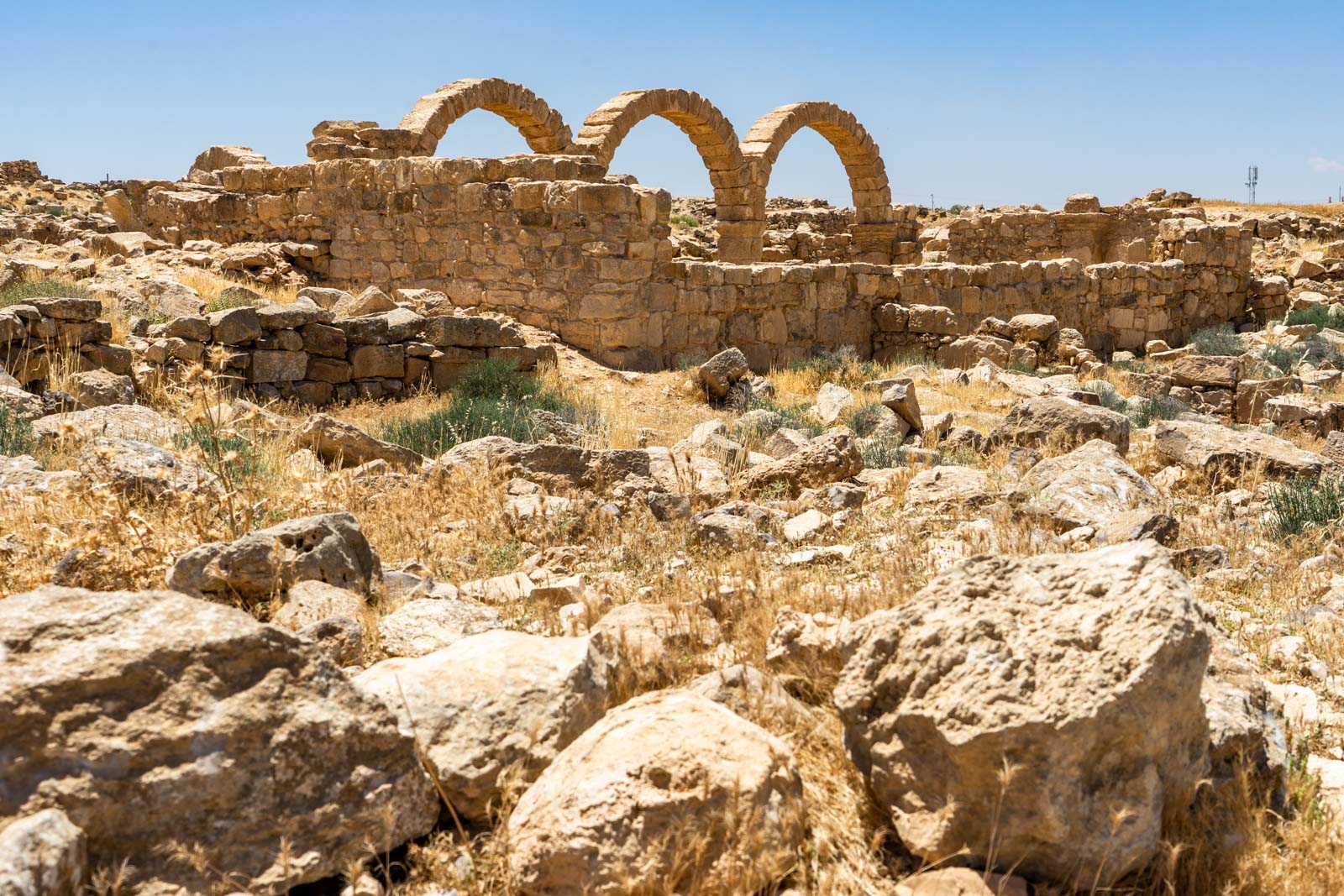
Visiting Um er-Rasas
When I visit Um er-Rasas, I feel like I’m doing more climbing than walking.
The ruins of the city are spread across a large area and most of it hasn’t been excavated. Although there are paths all through it, the only way to really get a sense of what is here is to climb over the fallen rocks and explore what you discover through doorways or behind piles of rubble.
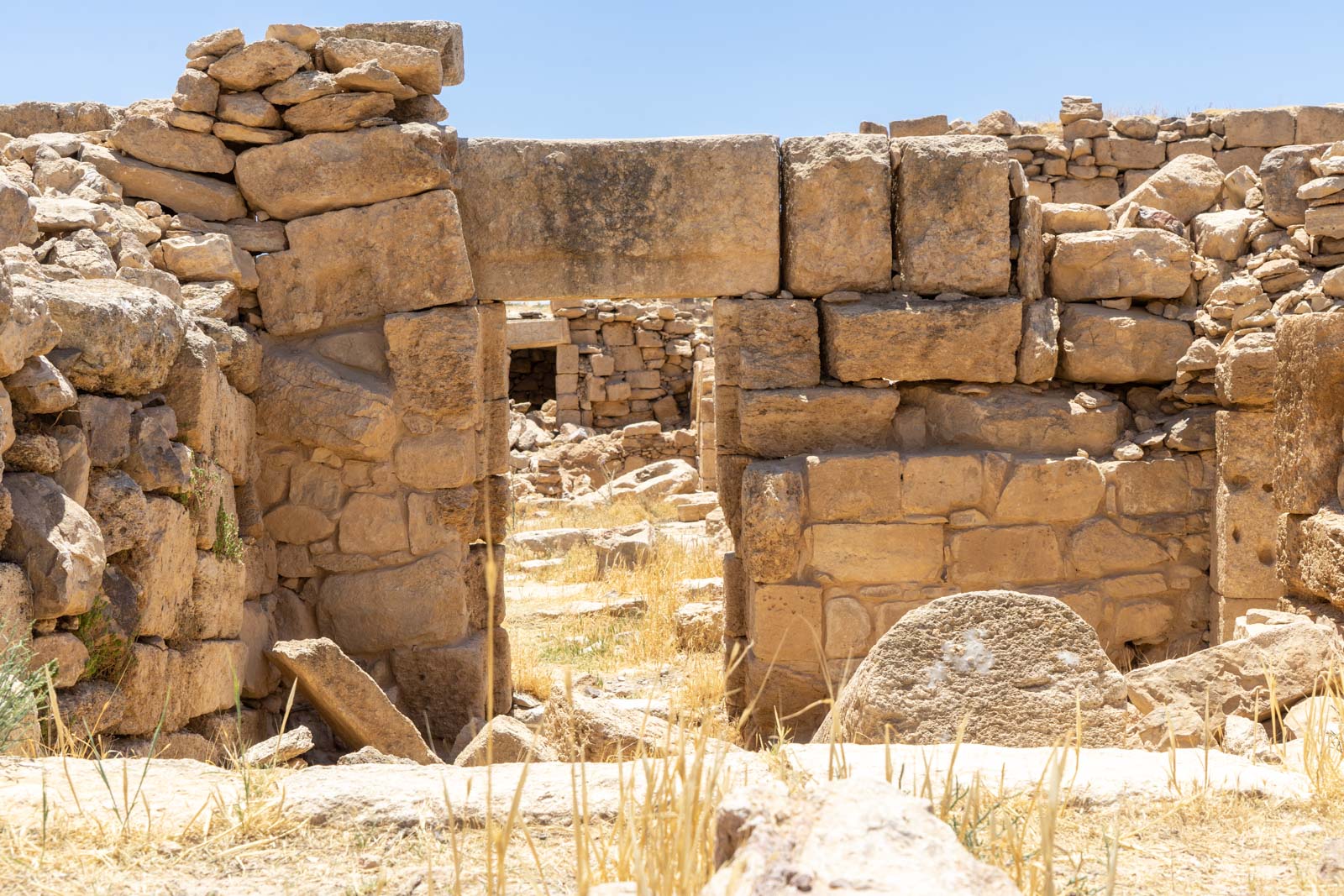
I’ve arrived with two other travellers and we are the only people at the site. As we climb into the remains of various buildings, we startle lizards that quickly run for cover.
A few birds fly away from us too. But, other than that, Um er-Rasas is quiet today under the blue skies and strong sun.
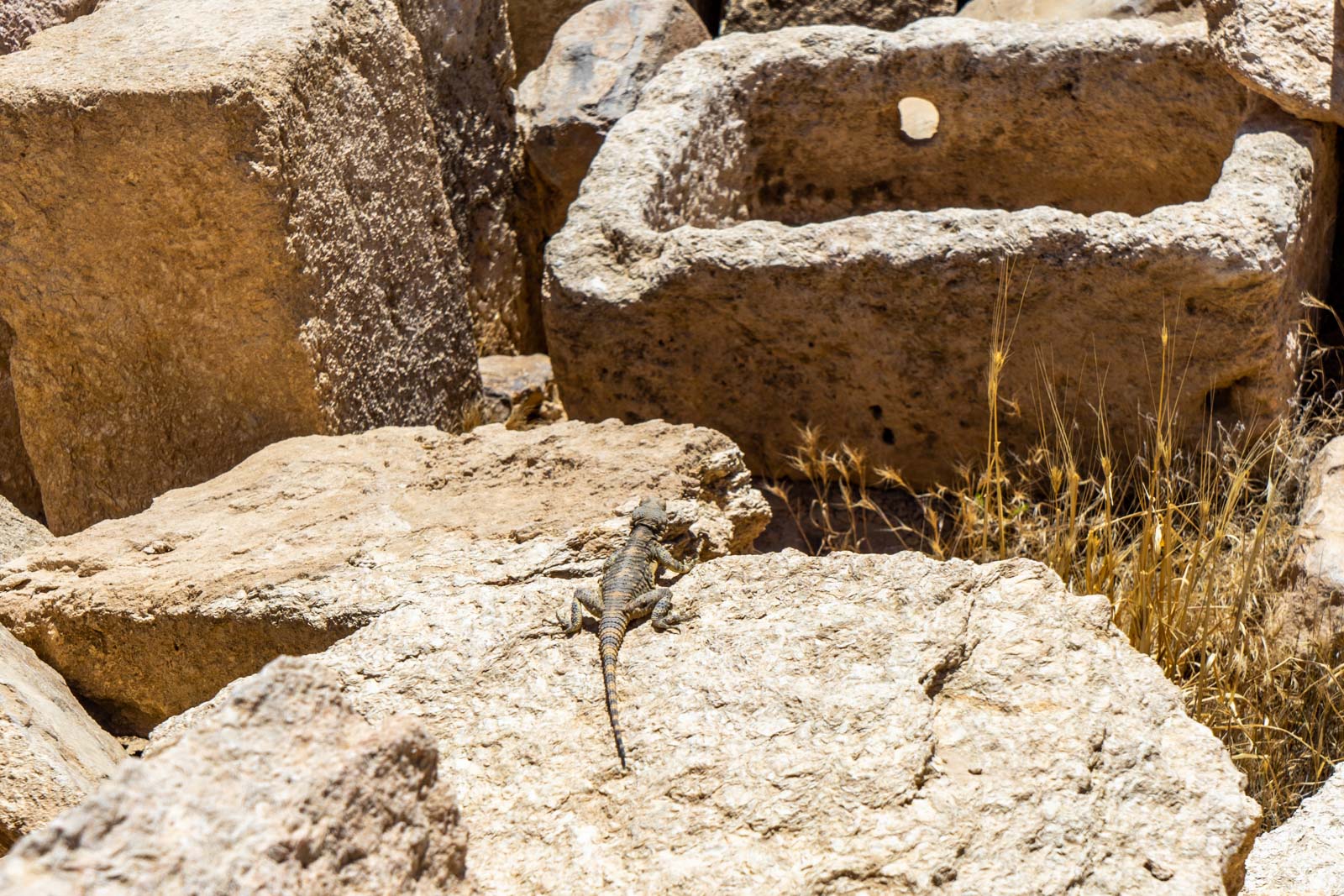
It takes us at least an hour to make our way through the ruins of the old city. Even in its state of disrepair, it’s obvious what some of the buildings would once have been.
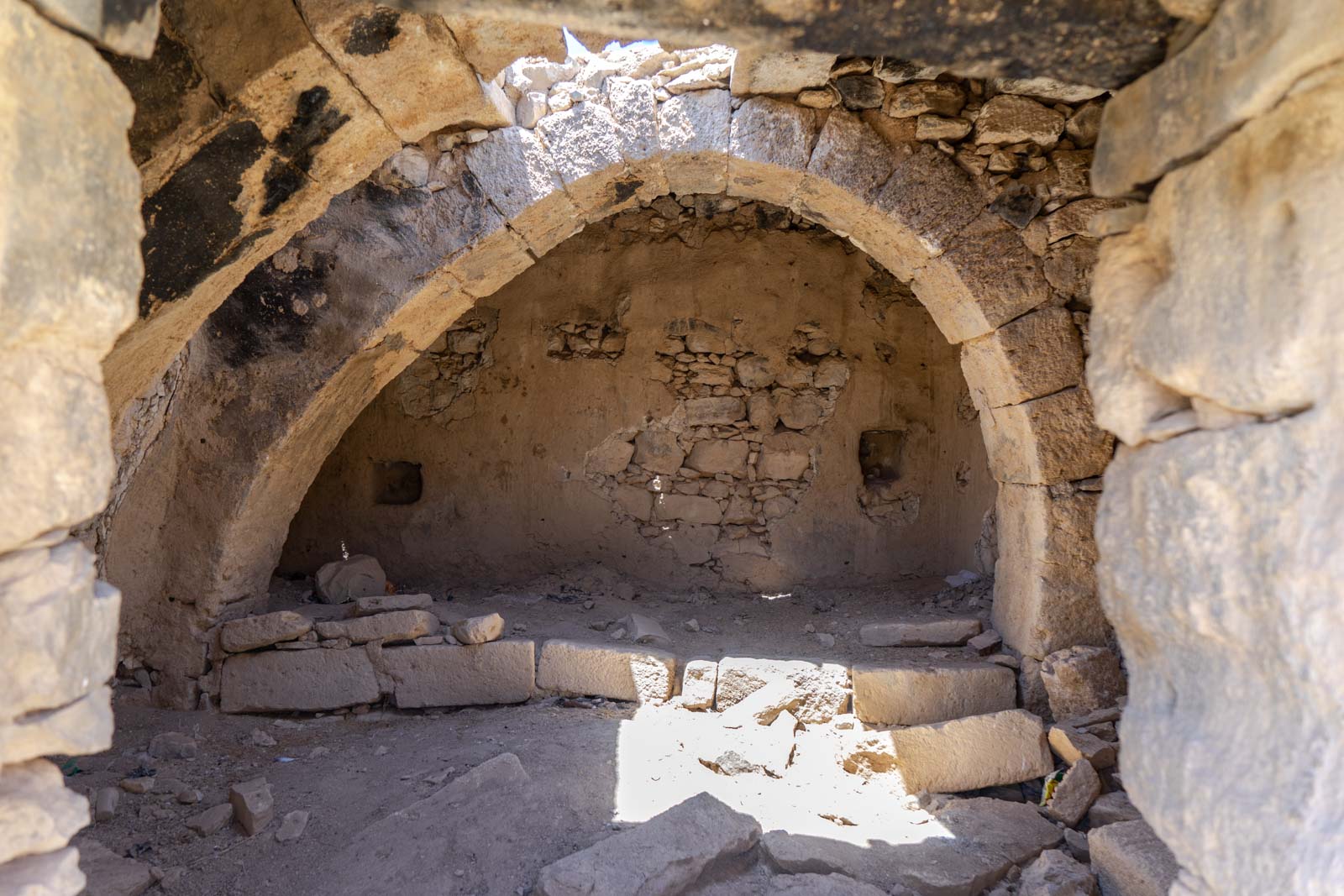
For the other buildings, we need to guess – and that becomes a bit of a game. But I do wonder whether it would have been wise to have accepted the offer of a tour from the guide who was waiting at the entrance.
Regardless, it’s obvious without a guide where the highlight of the Um er-Rasas site is. It’s at the far end of the ruins, underneath the large structure that has been built to protect it.
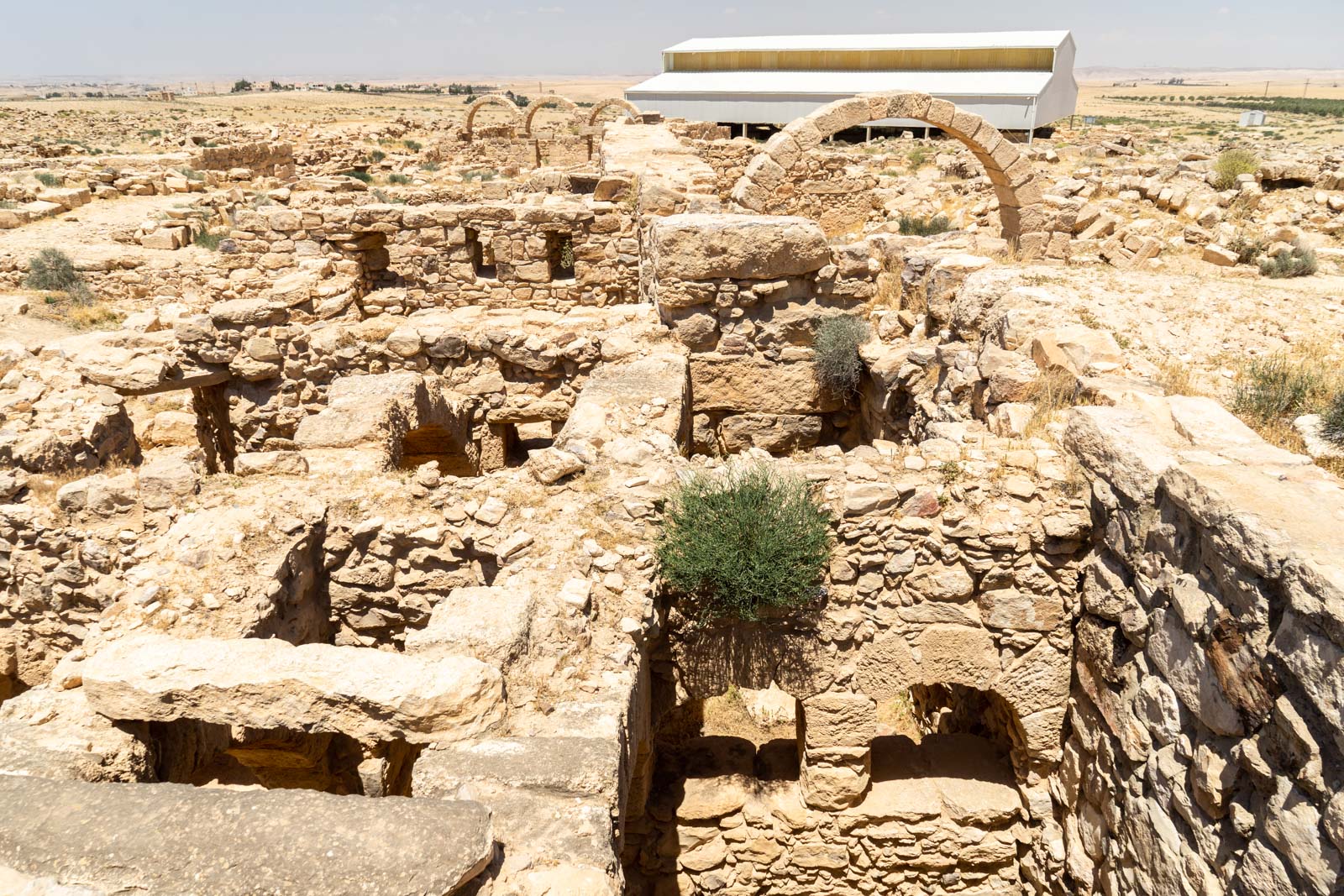
It’s here that we find the remains of the Church of St Stephen and its artistic treasure.
The Church of St Stephen
I go into the Church of St Stephen and immediately look up at the corrugated iron structure that has given me some much-needed shade.
However, it’s not up I should be looking, but down. Because it’s the floor of the ancient church that holds the masterpiece I have come to see.
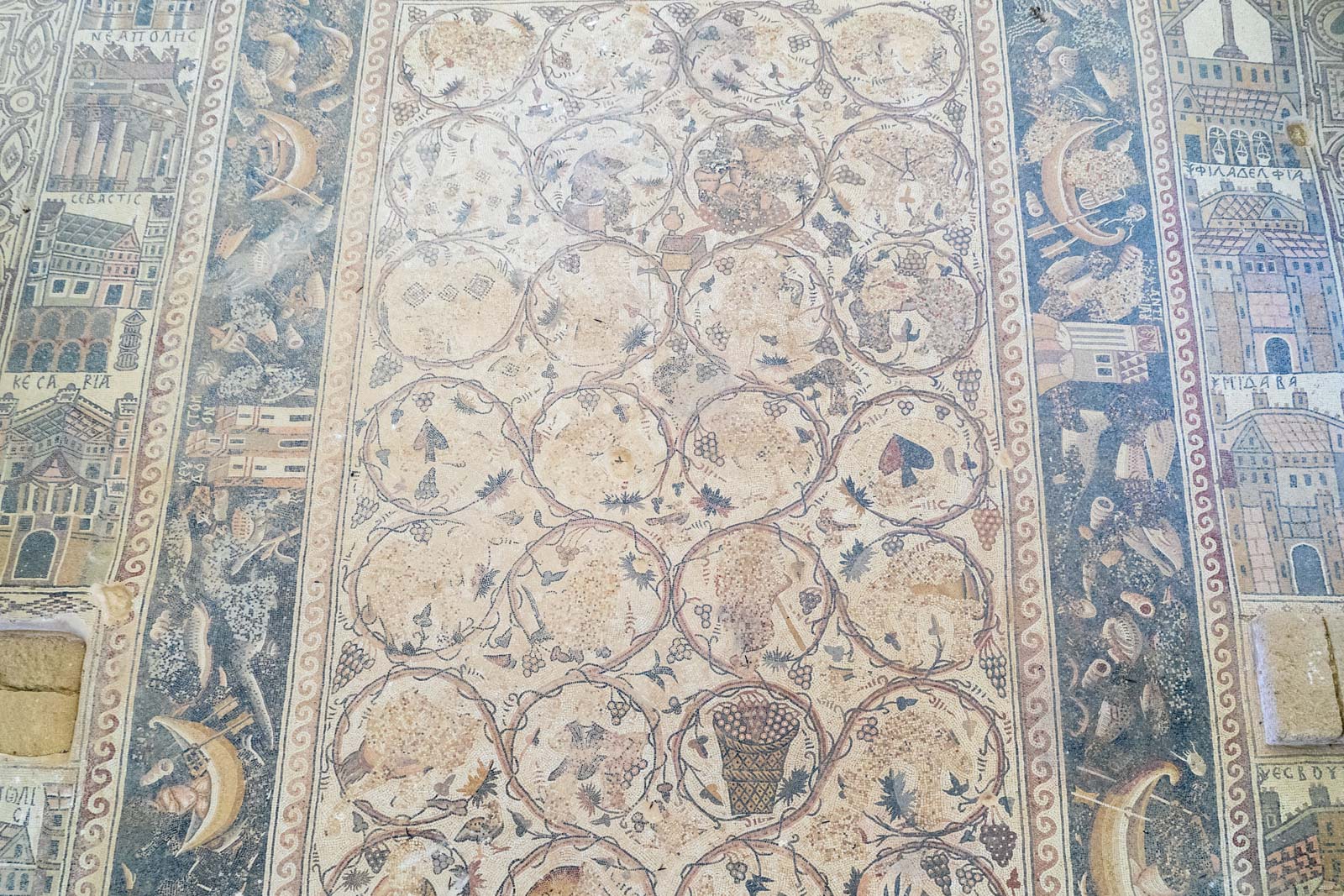
Here across the floor of the Church of St Stephen at Um er-Rasas is an enormous mosaic. Well, technically it is mosaics (plural) because they fill multiple sections of the floor of the large church. It’s estimated they were created in about 785 AD.
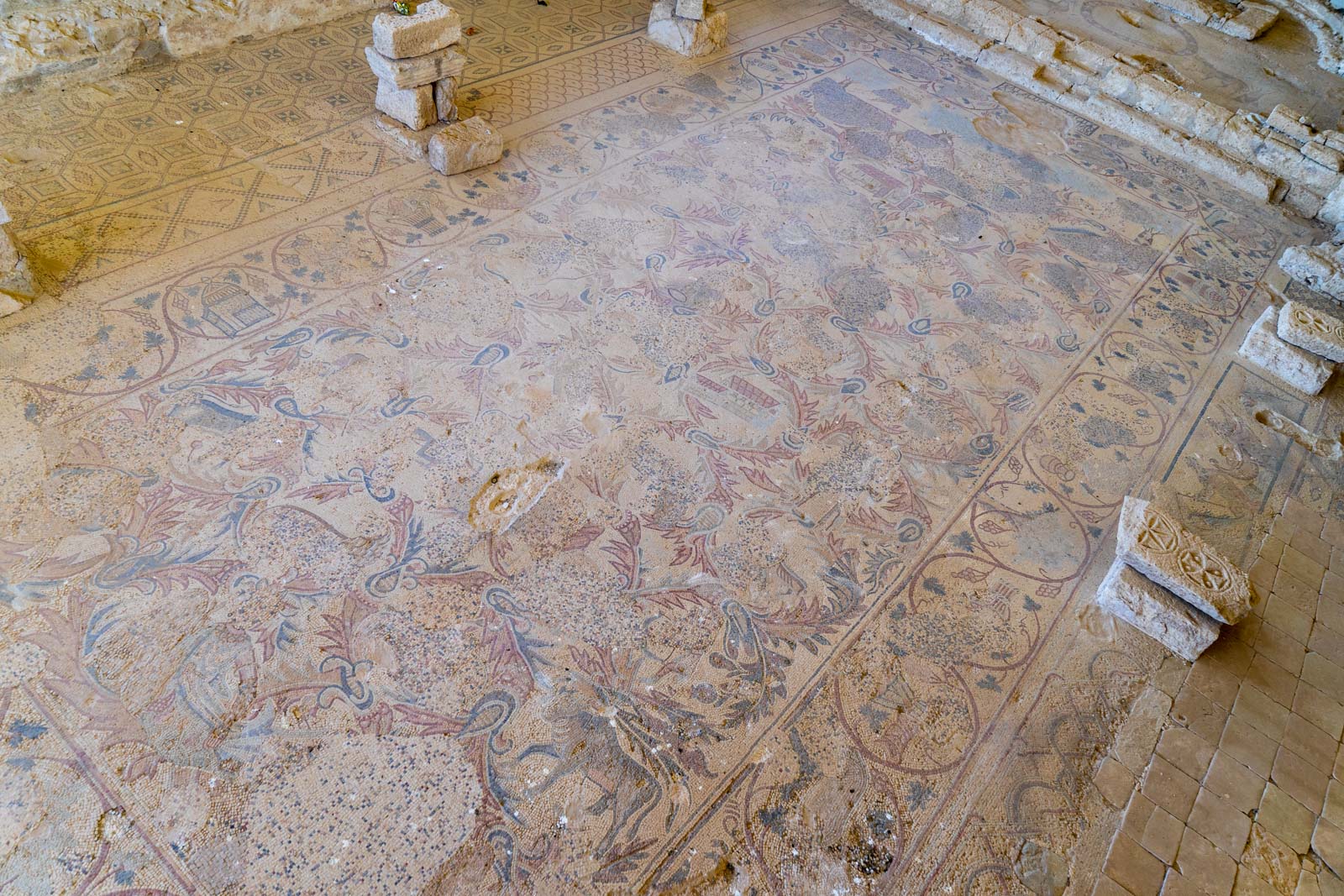
It’s the largest ancient mosaic floor in Jordan, full of different representations. There are scenes of hunting and fishing, there are natural motifs, and there is the expected religious iconography.
But one of the main elements you can see are images and names of nearby towns. Not surprisingly, historians were overjoyed when the mosaic was found in 1986 because it offers an invaluable source of information on the geography of the region at the time.
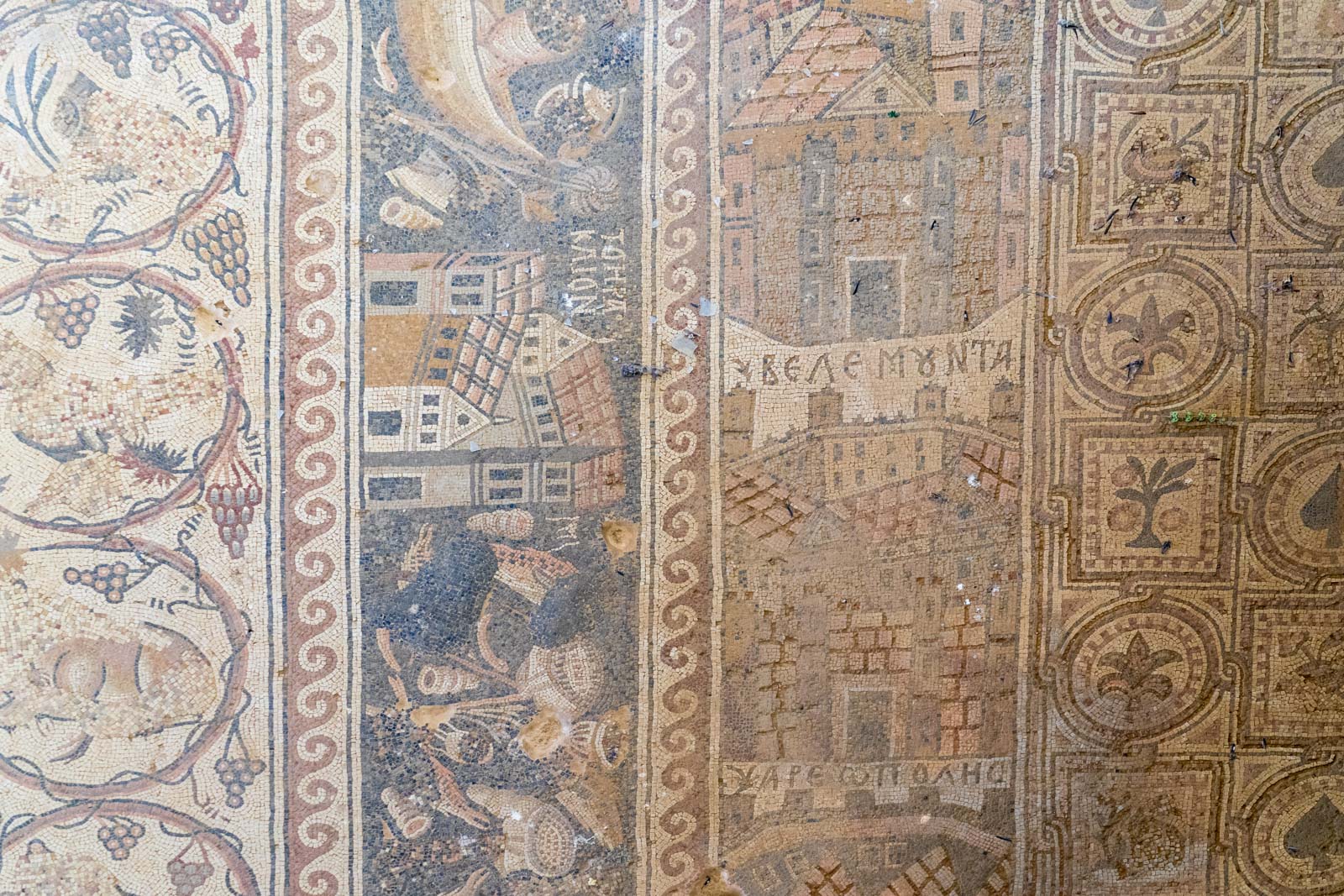
Walkways have been constructed throughout the interior of the church and you walk along them to explore the different sections. They serve two purposes – to protect the floor and to give you a better perspective of the design from an elevated position.
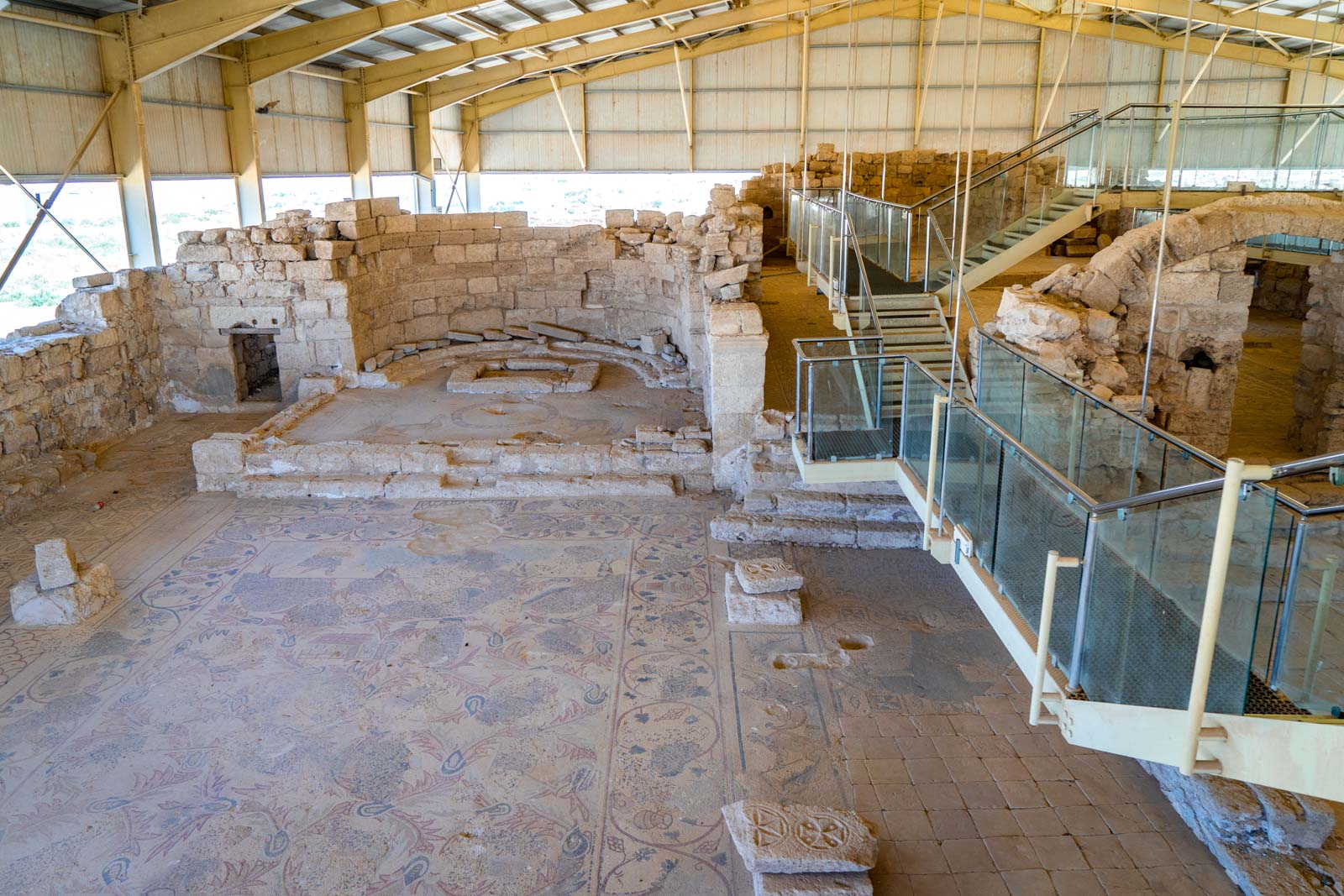
Looking at the mosaic floor from above, I am struck by how impressive it is in scale. But I also take a long time to look at each section, bit by bit, and take in the detail.
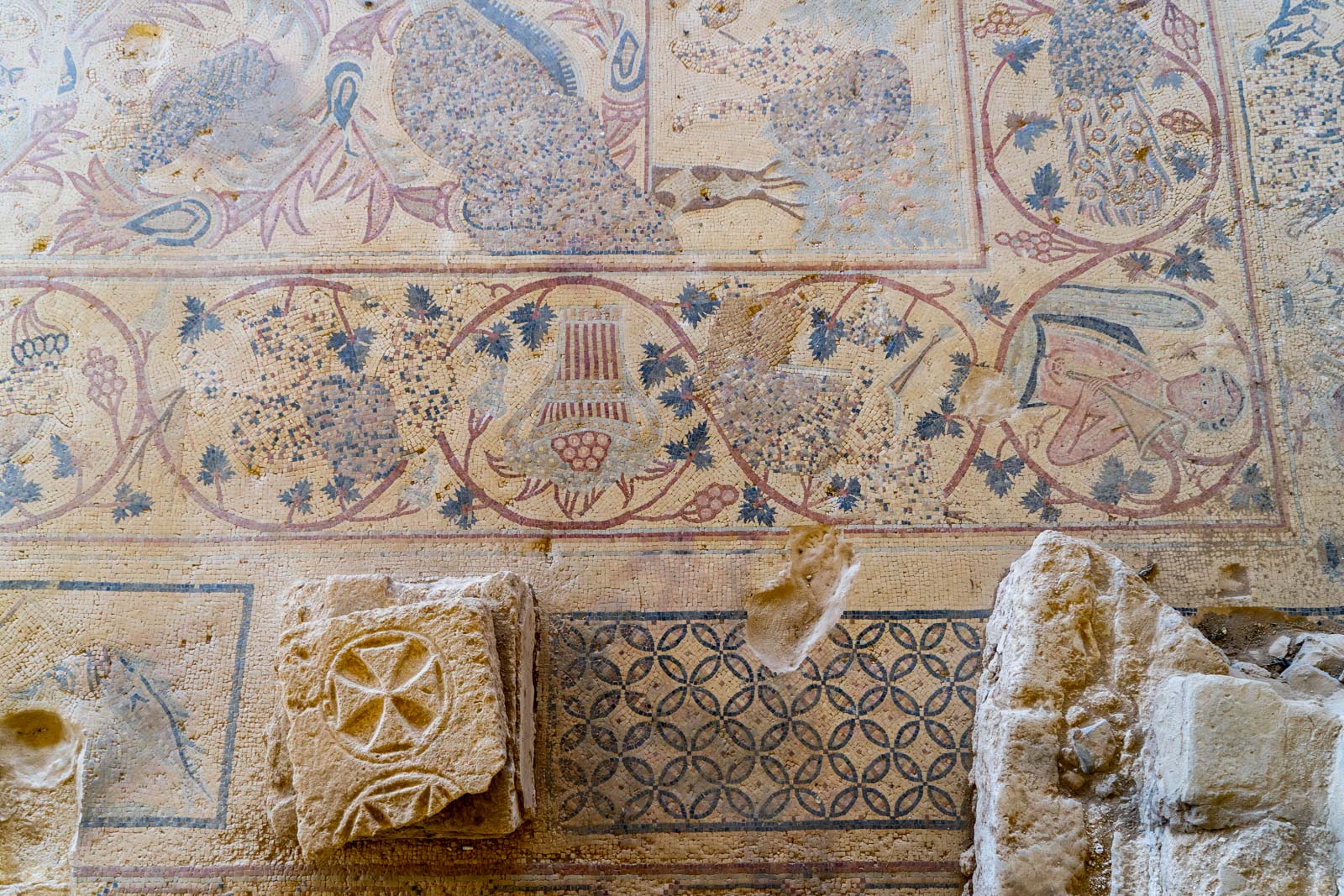
Have a look at this 360 photo I took, to get a sense of what the floor looks like and how it fits into what’s left of the church building.
It’s not just a piece of art, it’s capturing a moment in time. It’s a graphical map of this region during a peak period of cultural change and religious pilgrimage.
Madaba Map
In fact, it reminds me of a similar map I had seen recently.
A week ago, while I was on my G Adventures tour of Jordan, we had stopped briefly at the city of Madaba for lunch. While there, we went into the Church of St George to see its floor mosaic, which was created in the 6th century.
The mosaic is so famous in Jordan that it has its own name – the Madaba Map – and it is very important.
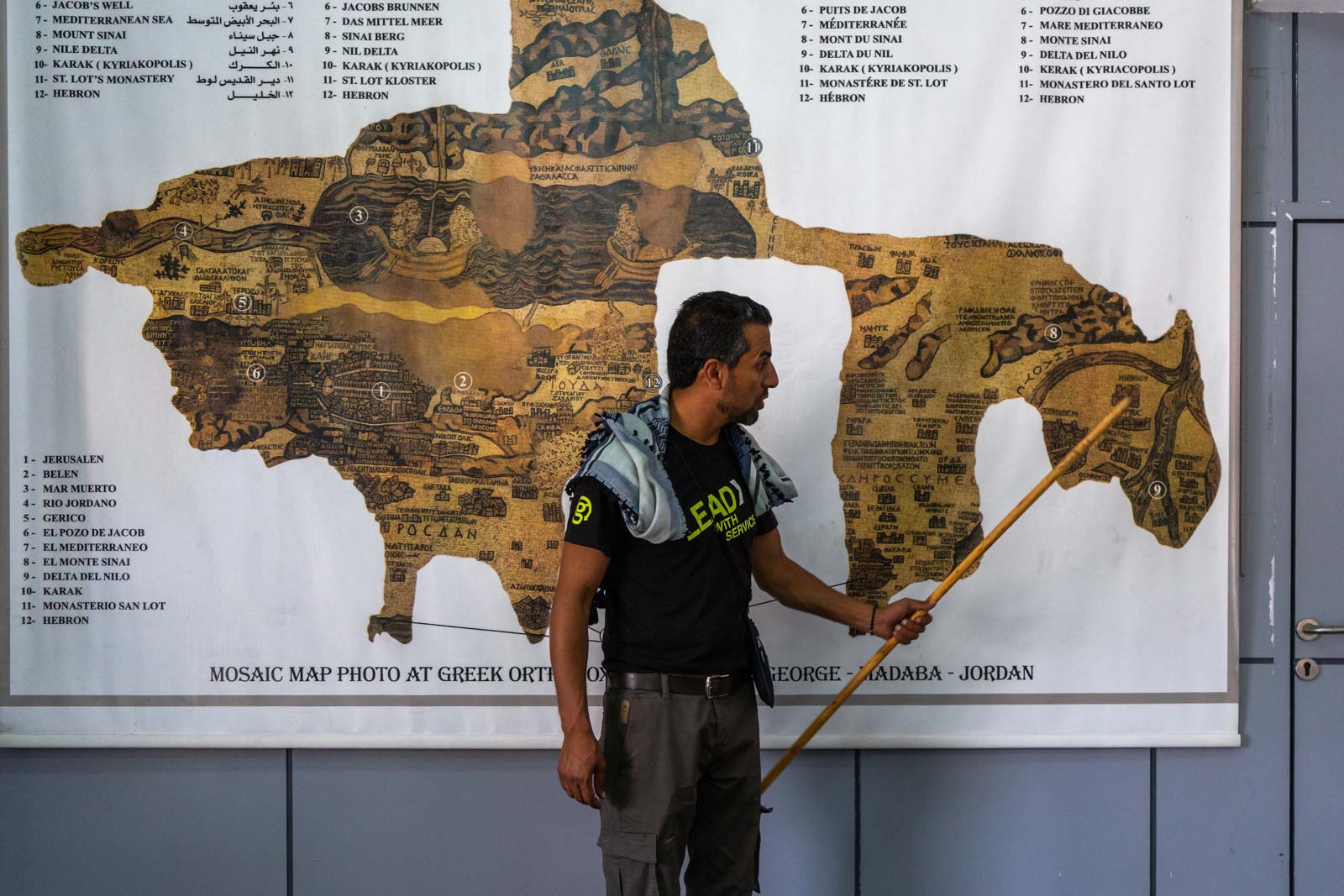
It’s not nearly as large as the mosaics at Um er-Rasas but the size is still impressive. What you can see today is about 16 metres by 5 metres (and it would probably once have been about a metre longer in each direction).
But it’s the detail that makes it special. It is a map of the Middle East and it’s considered to be the oldest surviving cartographic depiction of the Holy Land.
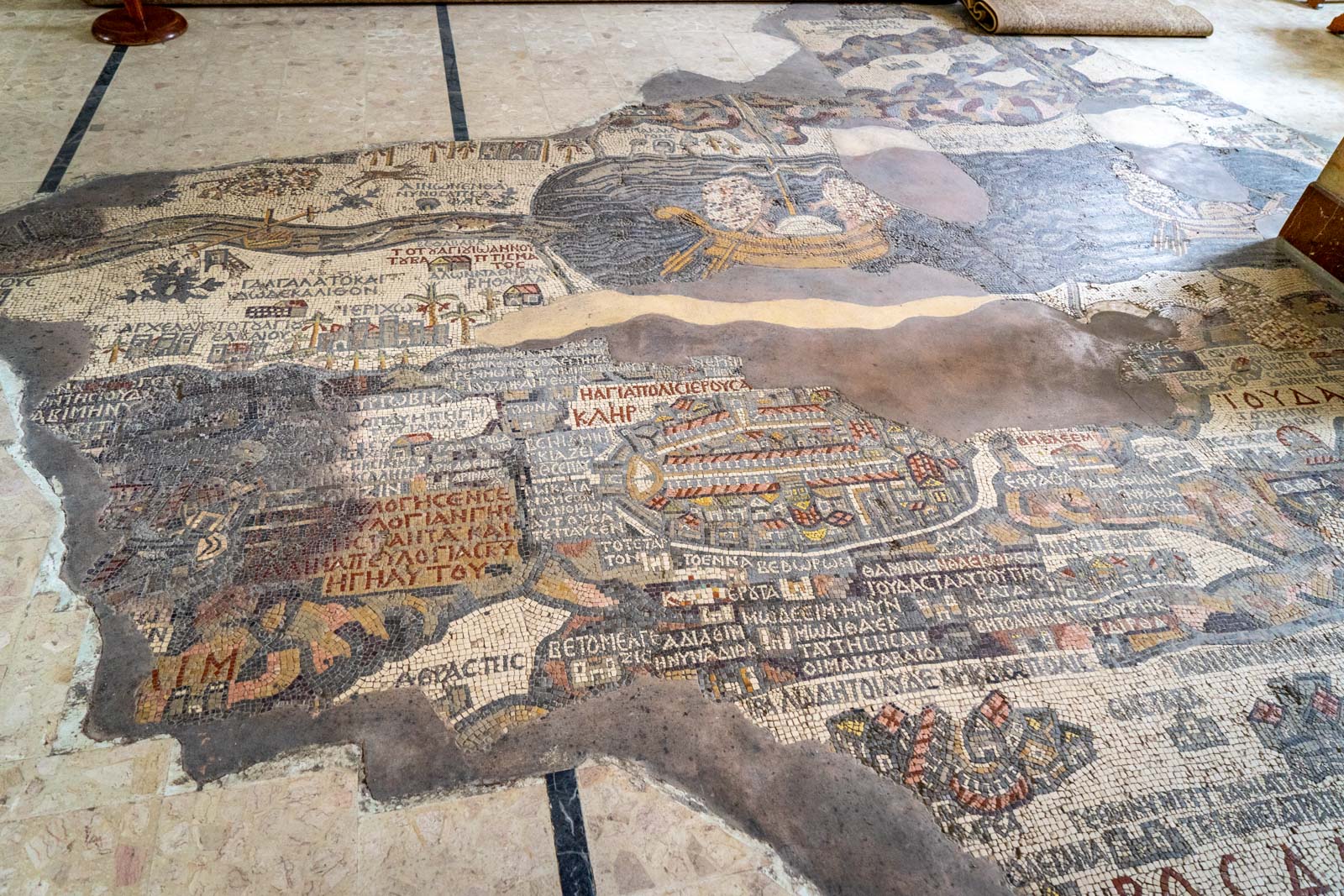
At the centre is an amazing depiction of Jerusalem that includes many individual buildings. Around it are other important biblical sites and towns.
The map is orientated in such a way that it reflects the actual direction of the geography. For this reason, it’s speculated that the map actually had a practical purpose to help orientate pilgrim travellers.
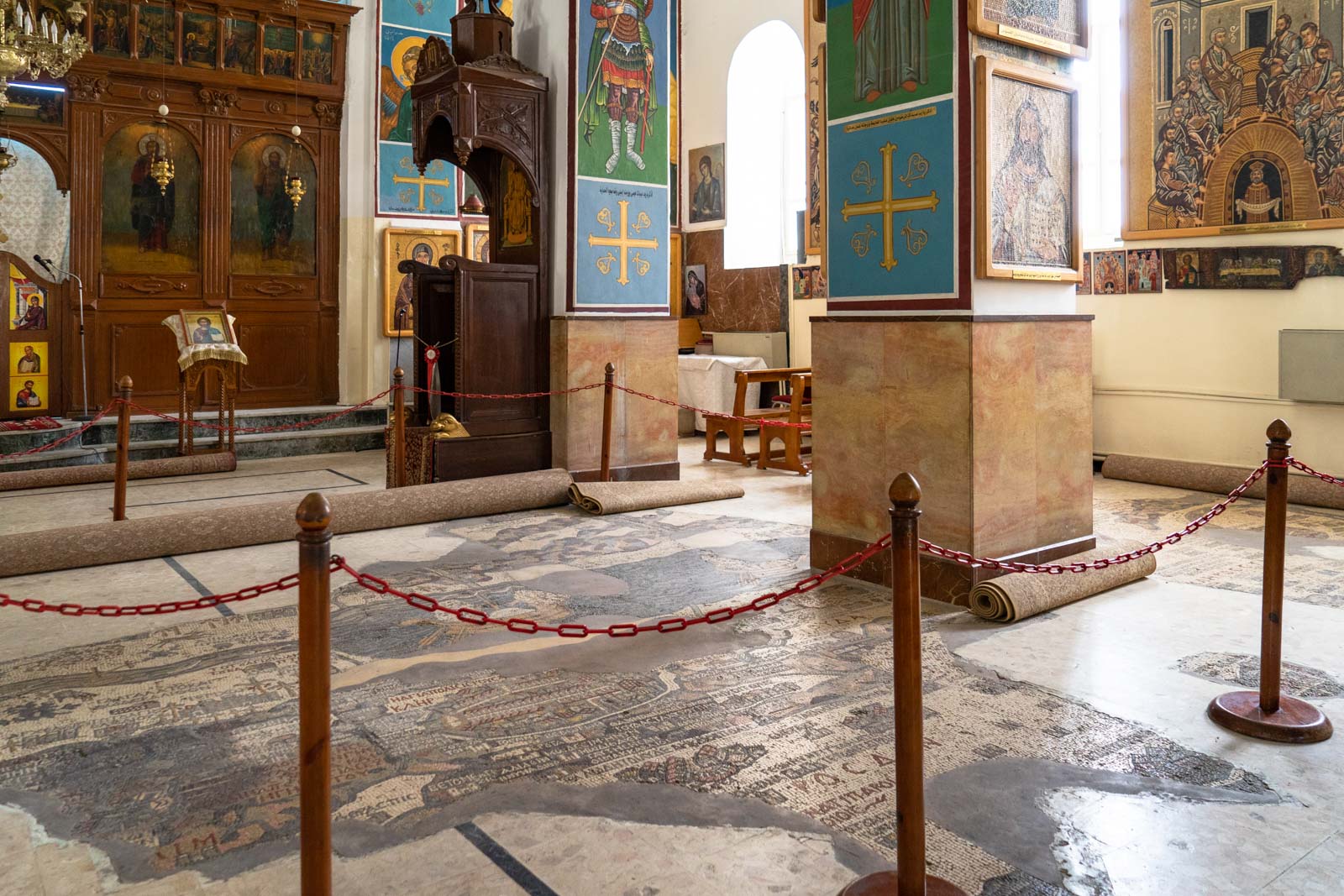
The Madaba Map is not a World Heritage Site but I think there could be justification to include it, if there was ever any interest. Regardless, it is as worth visiting Madaba as it is Um er-Rasas.
They are quite close to each other so it’s easy to do both at the same time. Although it’s interesting to compare the two mosaics, comparing the two sites also offers some insight to the region.
Madaba has been well-maintained and there is a steady stream of tourists. Um er-Rasas, on the other hand, still has a lot of potential excavation and restoration work.
There is a lot of history here in Jordan – much of it at the centre of some of the world’s most important events – and there’s still a lot more to be uncovered.






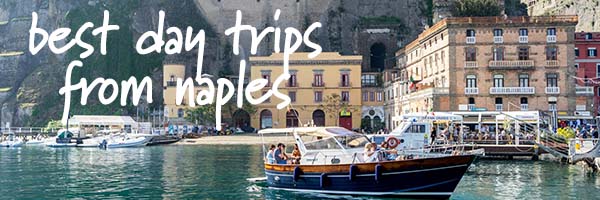
Nice post! Thanks for sharing!